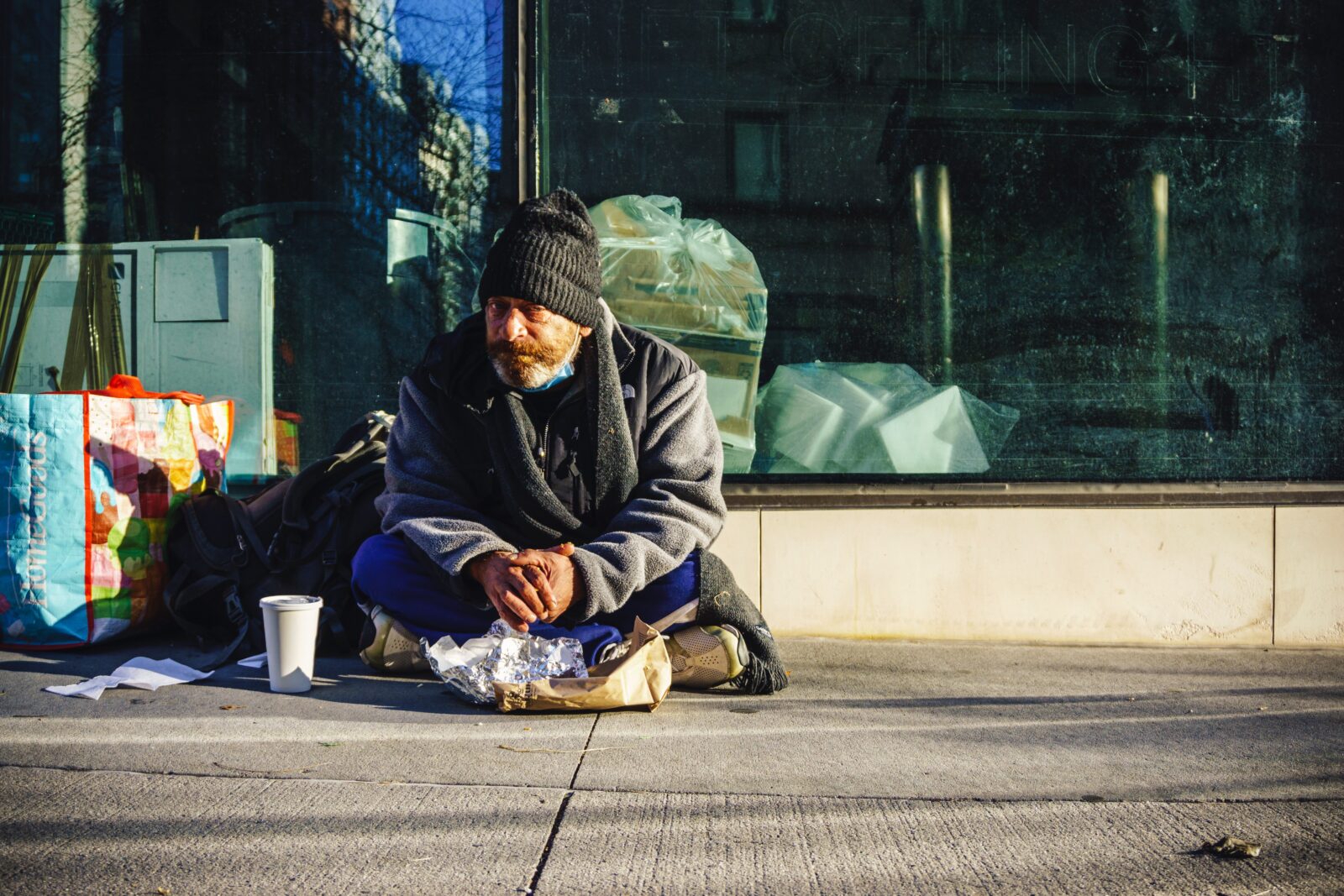This article is the fourth in a series authored by students at Covenant College alongside Marvin Olasky.
By Emma Failmezger and Marvin Olasky
Some people hear about “homeless camps” and have a romanticized idea: better to be out in nature than in a shelter with rules and “lights out” times. But homeless reality is grubby: Here’s what several stops at Chattanooga campsites on a rainy day in February, alongside two charity staffers who hand out food and supplies, showed.
The path to one campsite started at a Food City supermarket: We followed the train tracks and a trail of granola/candy bar wrappers, empty soda cans, beer bottles, and an occasional sock. The camp was on dirt with a surface of trash: torn mattresses, stained shirts balled up in the mud, open black bean cans, broken glass, old toys, and disintegrating paper.
A skinny man smoking a cigarette approached us, and an old woman accompanying him limped over. The staffers gave them bags that included canned food, rain ponchos, socks, emergency blankets, and handwarmers. The woman was delighted with a rain poncho. The man put out his cigarette with his thumb and said the staffers’ delivery was “the work of God.” The residents of the next tent were not home, but the staffers left food bags there.
We drove to an old and run-down white cinderblock church. Twelve yards behind it stood a metal shack surrounded by ten trash-filled or flipped-over grocery carts from Aldi, Food City, and Walmart. The marijuana smell was evident as a man with leathery skin leaned against a cart and asked about food stamps, but it was hard to understand him because he slurred his words. Another man stepped out of the shack and pointed at the words on his shirt: “spiritual gangster.” He ranted about an arrest warrant out for him for stealing grocery carts. A woman sat silently inside the shack. We pulled four food bags out of a larger backpack and gave them to the two men.
The next stop was in woods behind a drainage ditch and an empty Dollar General parking lot. The trail was mostly flooded so we played hopscotch from a fallen branch to a pile of old clothes to a dry spot to slippery mud. Amid food wrappers, soda bottles, couch cushions, plywood scraps, and torn clothes, a tent stood in the distance. As we approached the tent a man and woman peeked out of a tent, asked about the rainy weather, accepted a food bag, and zipped up their door.
A fourth stop was at a make-shift shelter made of torn plastic and trash bags by a chain link fence. A pile of burnt wood stood eight feet away from the shelter. At first glance the tarp shelter seemed empty, but then we heard voices: A man and a woman were hiding under trash. A charity staffer gave them a tent, two sleeping bags, blankets, socks, and ponchos. Then an older man limped by and asked for a First Aid kit because a spider had bitten him. When asked if he needed to go to hospital, the man said he had been bit before: “last time it was on my neck.” He accepted a First Aid kit, a food/supplies bag, and a sleeping bag.
Not every campsite looks like a tornado had careened through it. At one camp a tent sat out of the mud on multiple wooden pallets next to ten filled and tied-up trash bags. When offered a food package one gray-haired man with a worn and wrinkled face unzipped his blue tent to grab the bag and talk to the charity workers about how he could get mail. He gave them his cellphone number.
Traveling with the charity staffers raises many questions. Are they providing human contact that will eventually bring in from the cold deeply alienated human beings? (One of the charity workers had a 15-minute conversation with a woman in her 40s.) Or do the food cans and sleeping bags enable those who are addicts, alcoholics, or mentally ill — that’s most among the homeless, according to studies — to commit what one formerly-homeless man called “suicide on the installment plan”?
What do we owe to all human beings made in God’s image? Is it wrong to encourage the physically and mentally able to lie around all day? We don’t doubt the kind intentions of the charity staffers and those whose donations go for the food and supply bags, but are they helping or hurting?

